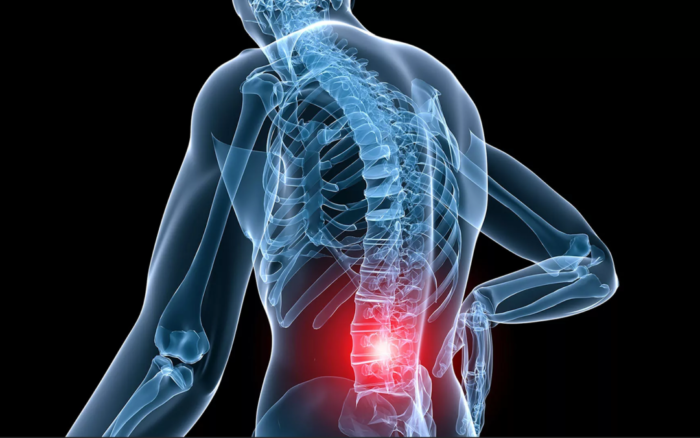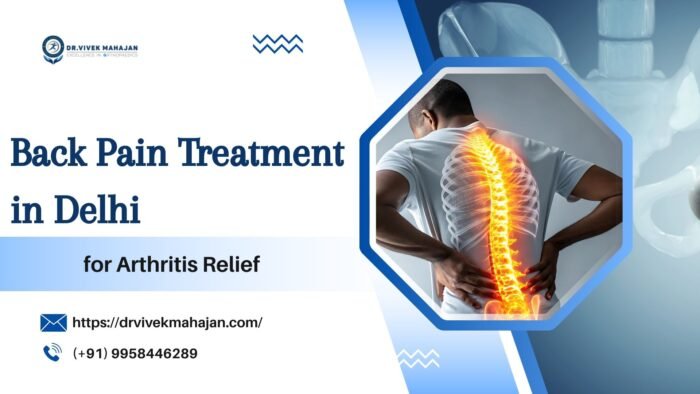Back and Neck Arthritis

Introduction
Lower back pain and neck pain are extremely common and occur more often as people get older. They can affect not only the physical health of the individuals concerned, but also their social and economic wellbeing. Although a source of considerable anxiety, spinal pain and its related problems can usually be managed successfully with surgery.
The spine gives the body structure and support. Without it, people could not stand up or keep themselves upright. It allows free movement and flexibility. The spine is also designed to protect the spinal cord, a column of nerves that connects the brain to the rest of the body. Without the spinal cord, people wouldn‘t be able to move any parts of their bodies, or control their organs.
Assessing Symptoms
SYMPTOMS OF THE BACK
Back pain is as much a part of the human condition as the common cold. In fact, 8 out of 10 adults will experience an acute episode of back pain at some point in their lifetime. Back pain is the second most common cause of missed workdays due to illness and the most common cause of disability.
There are several warning signs, known as red flag signs that may indicate that your back pain is caused by a more serious condition that requires immediate medical help.

These include:
- A fever of 38ºC (100.4ºF) or above
- Unexplained weight loss
- Swelling of the back
- Constant back pain that does not ease after lying down
- Pain in your chest or high up in your back
- Pain down your legs and below the knees
- Pain caused by a recent trauma or injury to your back
- Loss of bladder control
- Inability to pass urine
- Loss of bowel control
- Numbness around your genitals, buttocks or back passage
- Pain that is worse at night
Anatomy
The spine is made up of individual bones or vertebrae which are joined together by the intervertebral discs, as well as other joints and ligaments, to form a strong but flexible structure.
Need For Replacement Surgery
The primary purpose of back surgery or neck surgery is to correct an anatomical lesion in individuals who fail to show improvement with conservative (nonsurgical) treatment. Surgery is useful to change a patient’s anatomy (e.g. remove a disc herniation).
Back surgery might be needed:
- If you have a condition that compresses your spinal nerves, causing debilitating back pain or numbness along the back of your leg.
- In some instances when you have bulging or ruptured (herniated) disks — the rubbery cushions separating the bones in your spine. However, many people with bulging disks have no pain.
- If you have broken bones (fractured vertebrae) or other damage to your spinal column from an injury that leaves your spine unstable.
- If you have vertebral fractures and an unstable spine related to osteoporosis.
- If you’ve first tried conservative measures and they fail to relieve your back pain or other symptoms.
Surgery For Disc Problems
To determine who would benefit from back surgery to decompress a nerve due to pressure from a herniated disc, the following criteria are usually accepted by most physicians.
The individual must:
- Have a disc pressing on a nerve root, as shown by an MRI or CT scan
- Have consistent pain despite conservative treatments, including a prescribed exercise program
- Have severe pain radiating into the buttock or leg, (sciatica ) that does not decrease with conservative treatment such as physical therapy and medication, after 4 to 6 weeks of conservative treatment.
- Have neurological warning signs, like loss of an ankle reflex or the loss of urinary control (which is a surgical emergency)
Surgery To Stabilize The Spine
Spinal fusion is a process in which two vertebrae are goined together. Bone grafts are placed between or alongside the vertebrae, to join the bones together. Metal plates and screws are often used to attach the bones to be joined as an internal brace.
Fusion occurs when the adjacent bones growing together to form a single bone. A single level may be fused, (for example, the vertebrae across one disc space) or multiple levels, depending on the condition.
This approach can return normal alignment and strength between the vertebrae in individuals whose intervertebral structures are unstable because of a fracture or other condition such as spondylolisthesis.
Surgery To Create More Space In The Spine
Laminectomy is a surgical procedure that involves removing the laminae parts of the vertebrae. These are the areas of bone in the back of the vertebrae.
When the lamina is removed, more space is created in the spinal canal. This decompresses (that is, takes the pressure off) the nerves or spinal cord. This procedure is especially helpful for people with spinal stenosis, in which the narrowed spinal canal lacks adequate space for the spinal cord or nerves, causing pain in the back and buttocks and weakness in the legs.



